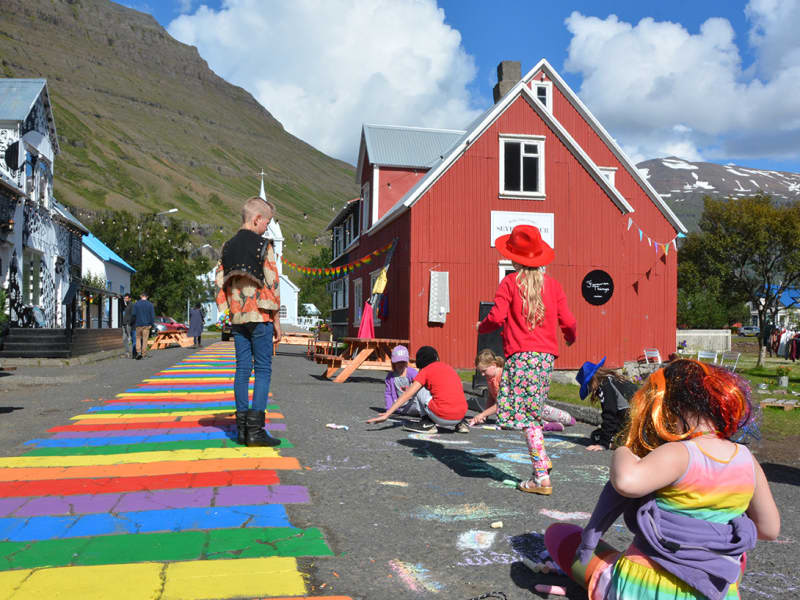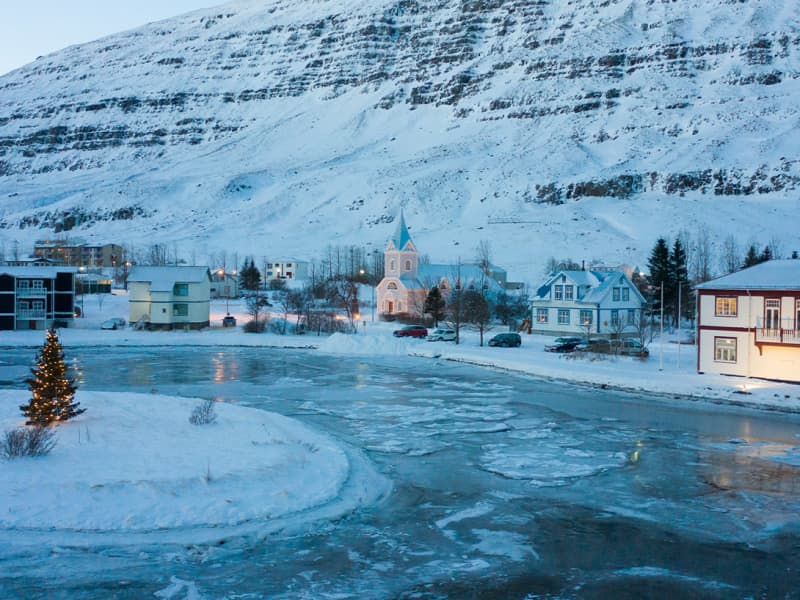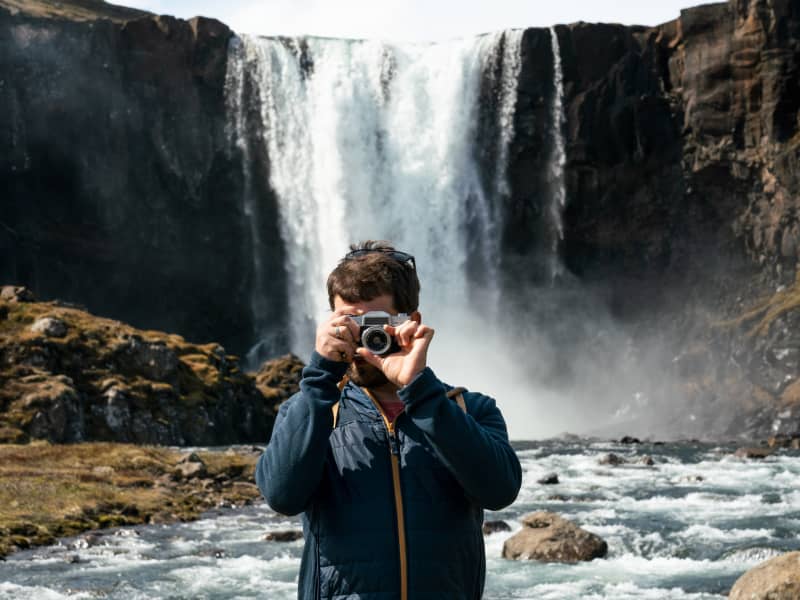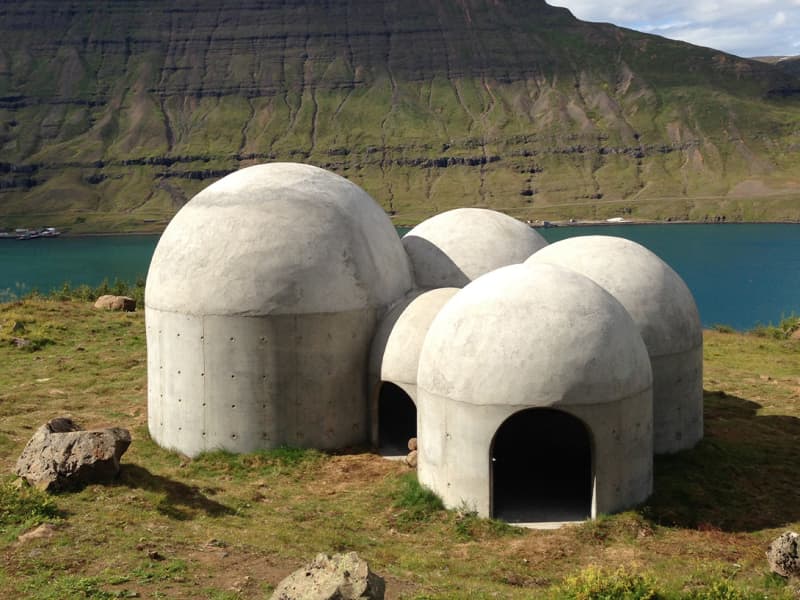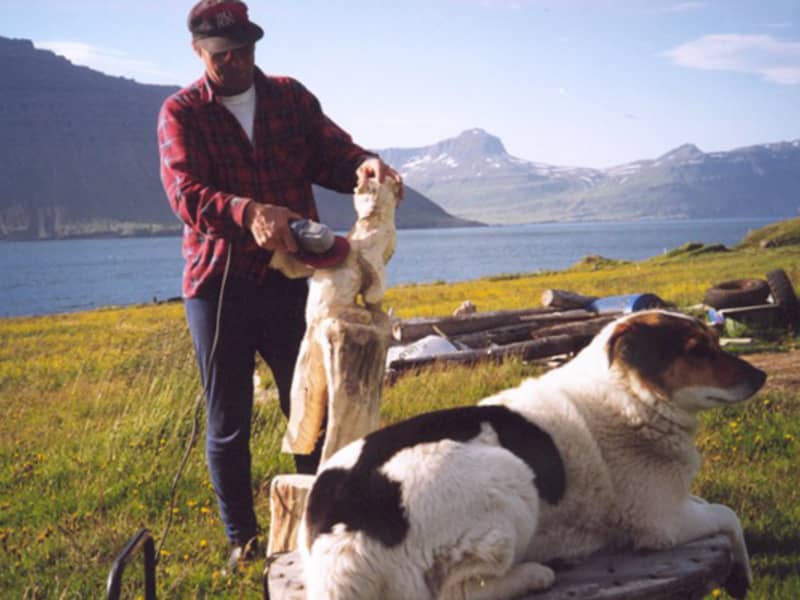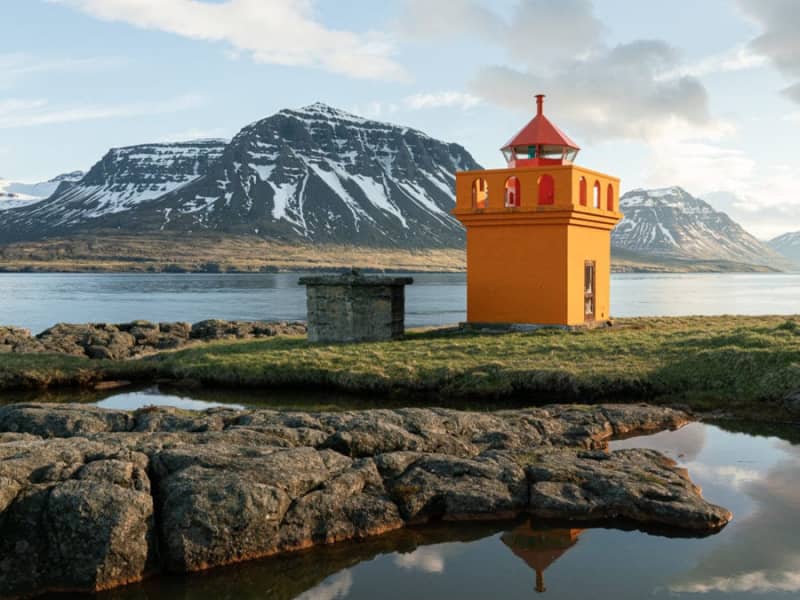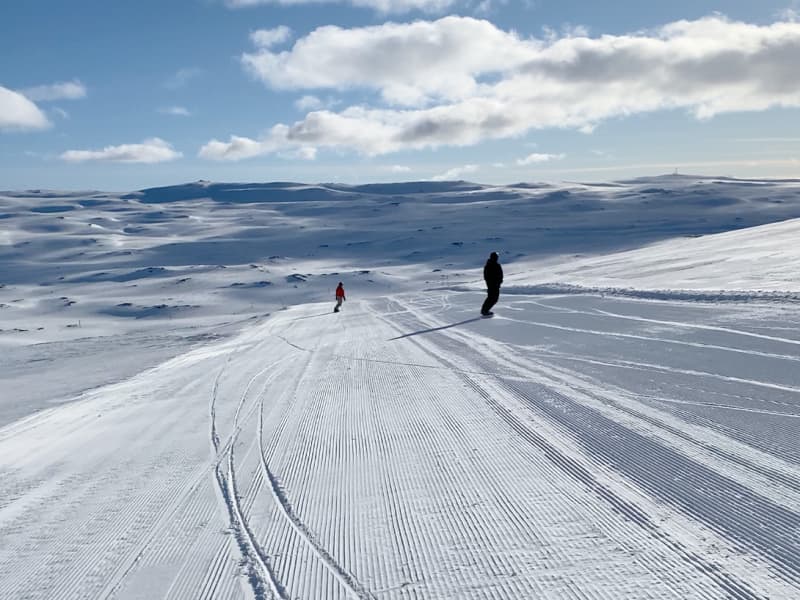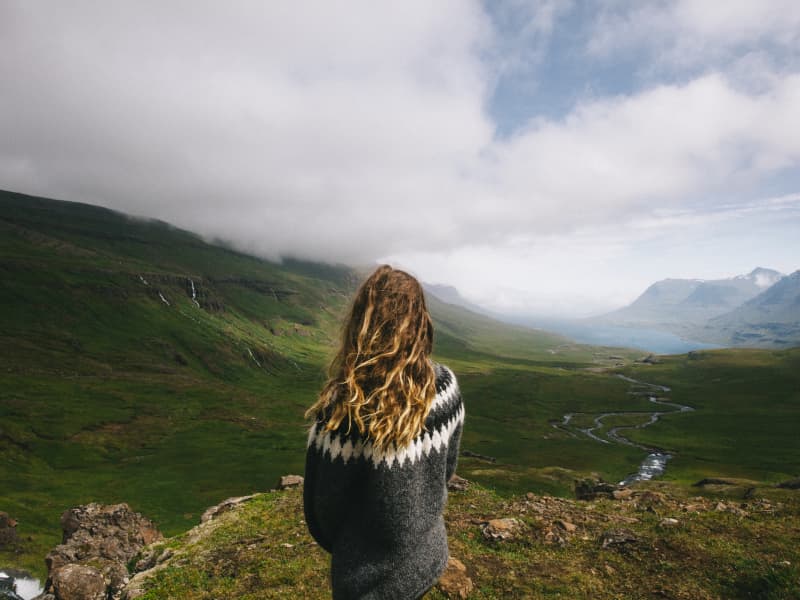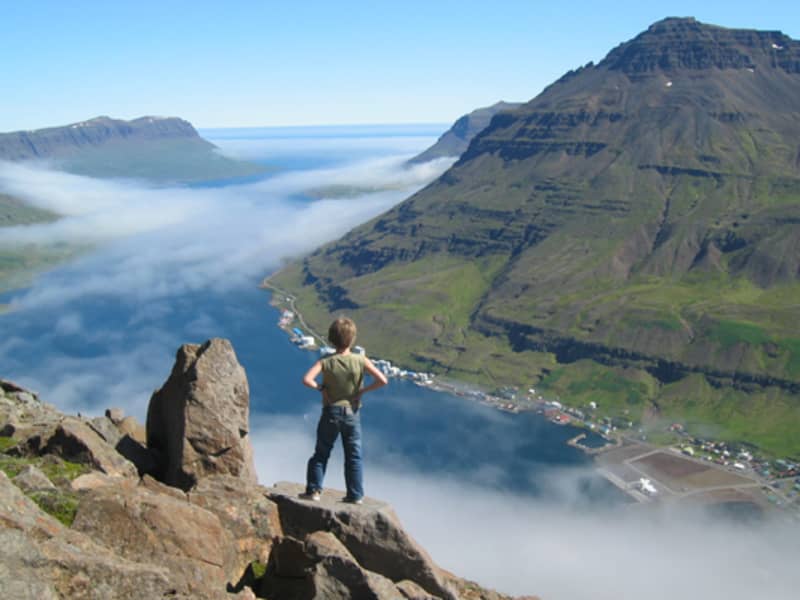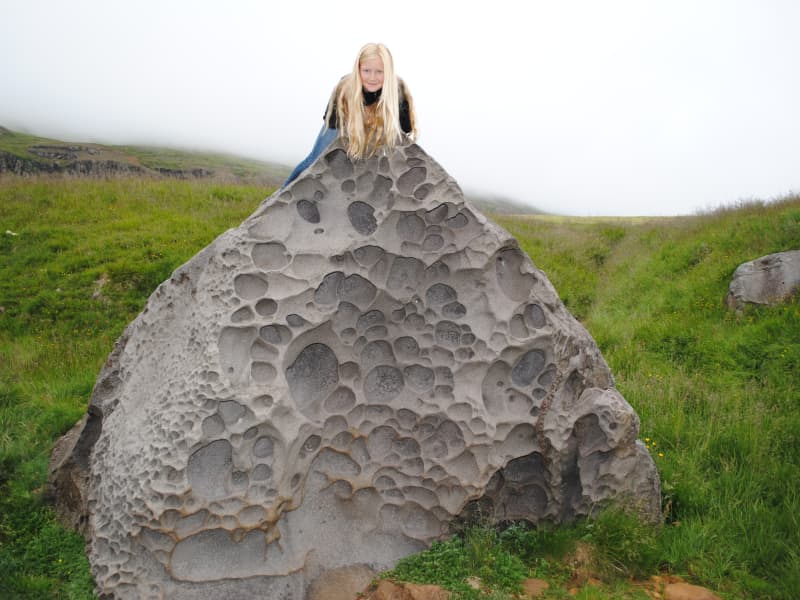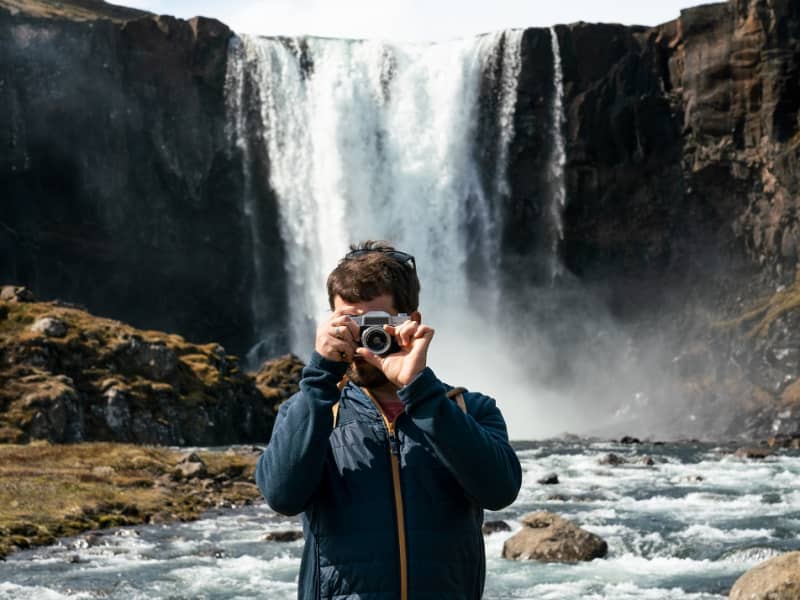Brimnes
Brimnes is an abandoned farm located on the northern side of Seyðisfjörður. It stands beneath Brimnesfjall, which acts as a protective barrier against the north wind. The highest point above the Brimnes farm is Ytra Rjúpnafell, which reaches 771 meters. The upper part of the mountain is characterized by steep and high cliffs, while the lower slopes are green, covered with shrubs and heather. Further out on the peninsula, the land is steep with difficult scree valleys.The coastal vegetation gives the land a distinct appearance. A hike to Brimnes in good weather is unforgettable. The nature is magnificent, and the view to the sea and over the fjord is beautiful. It is also an ideal place to reflect on the history of settlement in this remote location. The best starting point for the hike is Selstaðir, accessible by road No. 951 from Seyðisfjörður. A road was cleared to Brimnes before it was abandoned, but it is no longer driven. The sea route was the main supply route for the residents for most of the time.
Brimnes was a large farm in earlier times. The land was considered excellent for farming, and fishing was practiced. Several small farms were also in the vicinity of Brimnes, including Brimberg near the current lighthouse and Borgarhóll about one kilometer inland from Brimnes. The farm was inhabited until 1961 when the residential house burned down. Significant fishing was conducted in the late 19th century and early 20th century, forming a small community (Brimnessettlement). The Brimnes farm itself was located above Brimnestangi, and just outside it, above Útvogur, an icehouse was built in 1894, one of the first two icehouses in the country. The Brimnes lighthouse was built in 1906 and stands a short distance from the Brimnes farm. The residents of Brimnes engaged in fishing, and numerous visiting boats also fished there in the summer, providing the farmers with income from services. Several buildings related to fishing were constructed during these years, but most were only used in the summer. At the end of the 19th century, up to 40 rowboats operated from the Brimnes settlement in the summer, many from the Faroe Islands. This fishing activity ceased when motorboats became common, as proximity to fishing grounds was no longer as crucial. Remnants of old buildings can still be seen in the area. Near the farm is the place name Klausturskemmutangi, indicating that Brimneswas once owned by Skriðuklaustur monastery in Fljótsdalur.
Brimnes is not only beautiful, peaceful, and prosperous but also a place where nature and the struggle for survival could be harsh. In 1732, an avalanche struck Brimnes farm, killing nine people, while another nine survived. Some sources mention that nine days later, a four-year-old girl was found alive in the ruins. This winter was likely heavy with snow and was subsequently called Brimnes winter. In 1740, a boat carrying, among others, a county governor, was wrecked on a skerry later named Sýslumannsnaggur, located about one km outside Brimnes lighthouse at Sléttanesvogur. Then, on the morning of May 1, 1922, in calm and foggy conditions, the coastal ship Sterling ran aground on the same skerry. All on board, about 50 passengers and 30 crew members, were rescued. They reached land in lifeboats, and the ship's steward served refreshments on a place called Ostabalar nearby. The passengers were allowed to retrieve their belongings from the ship before the Danish coast guard transported them to the harbour at Seyðisfjörður. Goods and various ship items were salvaged from the ship, which was destroyed at the stranding site. There are well-documented records of this stranding, including a list of passengers and crew and an inventory of items salvaged from the ship and sold at auction. This event drew considerable attention since maritime transport was vital for the settlements at that time, with coastal ships transporting people, mail, and goods around the country. Sterling was among the first ships owned by the Icelandic state and was the only coastal ship at that time.

